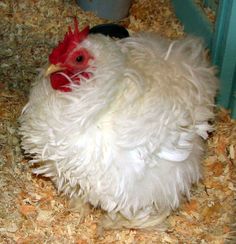

Understand the disease
Commonly found in the gut of warm-blooded animals, E. coli comprises rod-shaped bacteria and can be both a primary and a secondary pathogen, but you’re likely to deal with E. coli as a primary pathogen 90% of the time.
Most strains are harmless. Those that aren’t known as ‘avian pathogenic E. coli’ (APEC). Can survive outside of the intestine and so is easily transmitted from bird to bird. One of the clinical manifestations of APEC is E. coli peritonitis, which can lead to life-threatening sepsis. Follows a cyclical pattern. Proactive control measures, such as vaccinations and antibiotic use, should be timed with this in mind.
Know the signs
Primary pathogen symptoms in layer hens can be difficult to identify. If you can’t find the cause of death during a post-mortem examination, take a close look at the ova to see if you can find small, yellow strings of fibrin (pus). These are exuded from the bloodstream following the body’s attempts to isolate the bacterium. Secondary pathogen symptoms: significant quantities of fibrin in the spaces around the major internal organs, such as the lungs and liver.
Know which chickens are susceptible
18- to 30-week old hens, when egg production begins to peak. Their bodies are still developing and they’re stressed. Layer hens 56 weeks or older. Mainly from breathing in APEC-laden dust from dried-out faecal matter accumulating in, or under, the layer house. Pullets. The period when they begin producing the hormones needed for egg production is very stressful and their immune systems can be compromised.
Know the control measures
Early diagnosis is crucial. During periods when APEC appears to be the cause of increased mortality, conduct daily post-mortem examinations. If 50% or more of the dead birds examined show APEC-related lesions, act immediately to control the problem. Effective air quality control systems in the house/s. Test drinking water regularly. If necessary, treat with a chlorine-based product to kill any APEC bacteria. Vaccinate. The latest, most effective vaccine is Zoetis’s Poulvac E. coli. It’s normally applied by spraying twice over the pullets during the rearing period. There’s no significant vaccine reaction and it can even be given to birds in lay.
Know the treatment
Antibiotics may be useful in treating APEC-related health issues, provided treatment starts early. Although antibiotics are generally not helpful in older layers, they can be used in case they do have a positive effect. Feed the birds probiotics and treat layer feed with organic acids or formaldehyde to kill any APEC in it. Spray dusty pullet and hen houses with appropriate disinfectants.
 Contact Jaguza Support
Contact Jaguza Support